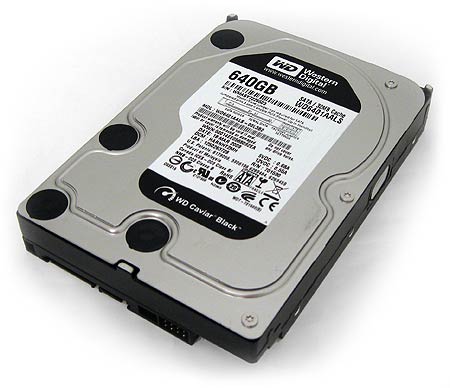Gigabit Ethernet: Dude, Where's My Bandwidth?
Conclusion
Why aren't our Gigabit networks delivering Gigabit speeds?
Surprise, they probably are!
While in real-world situations, the network will be severely bottlenecked by the hard drives. In a synthetic memory-to-memory scenario we demonstrated that our plain-Jane gigabit network delivered speeds very close to the theoretical 125 MB/s gigabit limitation. Typical drive-to-drive network speeds in a real-world situation will likely be limited from 20 to 85 MB/s, depending on the speed of the hard disks.
For fun, we also tested some short-run cable scapegoats such as power cable interference, cable lengths, and Cat 5e vs. Cat 6. In our small home network, we found that none of these really had a significant impact on performance, although we must point out that in a larger and more complex network with longer cable lengths, these factors might become viable concerns.
At the end of the day, we can heartily recommend that anyone who moves a lot of files should already have a Gigabit Ethernet network at home. If you're not there already, upgrading will yield a nice bump in speed when upgrading from 100 megabit, which will likely be in the range of a two-fold data transfer rate increase at the very least.
Gigabit Ethernet in a home network can be leveraged to even higher multiples of performance if the network is based on a NAS running a hardware-controlled RAID array. In our real-world test network, this resulted in a 4.3 GB file transfer that took only one minute to copy. Over a 100 megabit connection, this same file would likely have taken about six minutes to copy.
Gigabit networks are coming into their own as an affordable standard. Now all we have to do is let hard drive speeds catch up. Or, take the more proactive approach and use your enthusiast smarts to build storage arrays able to work around the limitations of today's HDD technology. The result will undoubtedly be better throughput from your gigabit network.
Get Tom's Hardware's best news and in-depth reviews, straight to your inbox.
Don Woligroski was a former senior hardware editor for Tom's Hardware. He has covered a wide range of PC hardware topics, including CPUs, GPUs, system building, and emerging technologies.
-
drtebi Interesting article, thank you. I wonder how a hardware based RAID 5 would perform on a gigabit network compared to a RAID 1?Reply -
HelloReply
Thanks for the article. But I would like to ask how is the transfer speed measured. If it is just the (size of the file)/(a time needed for a tranfer) you are probably comsuming all the bandwith, beacuse you have to count in all the control part of the data packet (ethernet header, IP headrer, TCP header...)
Blake -
jankee The article does not make any sense and created from an rookie. Remember you will not see a big difference when transfer small amount of data due to some transfer negotiating between network. Try to transfer some 8GB file or folder across, you then see the difference. The same concept like you are trying to race between a honda civic and a ferrari just in a distance of 20 feet away.Reply
Hope this is cleared out.
-
spectrewind Don Woligroski has some incorrect information, which invalidates this whole article. He should be writing about hard drives and mainboard bus information transfers. This article is entirely misleading.Reply
For example: "Cat 5e cables are only certified for 100 ft. lengths"
This is incorrect. 100 meters (or 328 feet) maximum official segment length.
Did I miss the section on MTU and data frame sizes. Segment? Jumbo frames? 1500 vs. 9000 for consumer devices? Fragmentation? TIA/EIA? These words and terms should have occurred in this article, but were omitted.
Worthless writing. THG *used* to be better than this. -
IronRyan21 ReplyThere is a common misconception out there that gigabit networks require Category 5e class cable, but actually, even the older Cat 5 cable is gigabit-capable.
Really? I thought Cat 5 wasn't gigabit capable? In fact cat 6 was the only way to go gigabit. -
cg0def why didn't you test SSD performance? It's quite a hot topic and I'm sure a lot of people would like to know if it will in fact improve network performance. I can venture a guess but it'll be entirely theoretical.Reply -
flinxsl do you have any engineers on your staff that understand how this stuff works?? when you transfer some bits of data over a network, you don't just shoot the bits directly, they are sent in something called packets. Each packet contains control bits as overhead, which count toward the 125 Mbps limit, but don't count as data bits.Reply
11% loss due to negotiation and overhead on a network link is about ballpark for a home test. -
jankee After carefully read the article. I believe this is not a tech review, just a concern from a newbie because he does not understand much about all external factor of data transfer. All his simple thought is 1000 is ten time of 100 Mbs and expect have to be 10 time faster.Reply
Anyway, many difference factors will affect the transfer speed. The most accurate test need to use Ram Drive and have to use powerful machines to illuminate the machine bottle neck factor out.
